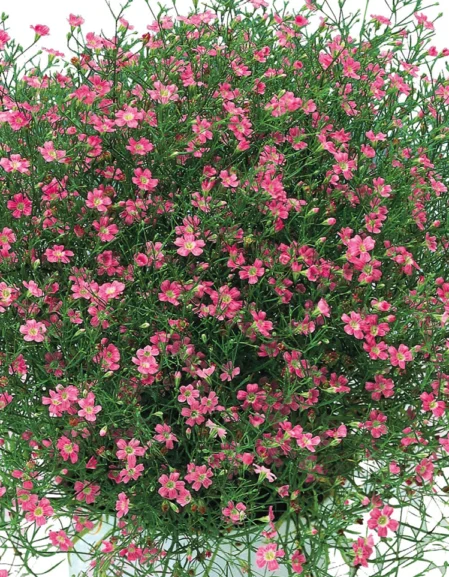Enhance Your Floral Arrangements with Gypsophila pacifica Pink
Gypsophila pacifica, commonly known as Pacific Baby’s Breath, brings a delicate and airy quality to gardens and floral designs. This perennial species is renowned for its robust nature and adaptability to various soil types, including clayey and cold soils. During summer, it produces abundant sprays of pinkish-white flowers, creating a cloud-like effect that complements more substantial blooms in borders and flower beds.
Growing Conditions
Gypsophila pacifica thrives in full sun and well-drained soil. It is drought-resistant and can tolerate a range of soil conditions, making it suitable for various garden settings. The plant typically reaches a height of 60–100 cm (2–3 feet), adding a soft, airy presence to garden compositions.
Planting Guide
Sow seeds indoors in early spring, covering them lightly with soil. Maintain a temperature of 18–20°C (64–68°F) for germination, which typically occurs within 10–21 days. Once seedlings are large enough to handle, transplant them into individual pots and grow on under glass until all risk of frost has passed. Harden off before planting outside, spacing plants approximately 30 cm (12 inches) apart to allow for full growth.
Care & Maintenance
Water plants at the base to prevent mildew, allowing the soil to dry slightly between waterings. Deadhead spent flowers regularly to encourage fresh blooms and extend the flowering period. Taller plants may require support with brushwood stems in exposed positions. Feeding at regular intervals throughout summer with a high-potash fertiliser will promote healthy growth and abundant flowering.
Flowering & Cut Flower Tips
Gypsophila pacifica blooms from summer well into late autumn, providing a continuous display of enchanting flowers. For floral arrangements, harvest flowers early in the morning when they are fully open to ensure maximum vase life. Pinching out the growing tips encourages bushier growth, resulting in more abundant blooms.
Garden Impact
This gypsophila variety attracts pollinators such as bees and butterflies, enhancing biodiversity in your garden. Its soft, cloud-like flowers pair beautifully with other summer blooms, creating stunning displays in borders and flower beds. Combine with contrasting foliage plants to highlight its delicate beauty.
Additional Notes
At the end of the season, let seed heads dry on the plant before collecting seeds for future planting. Store seeds in a cool, dry place for the best results.


